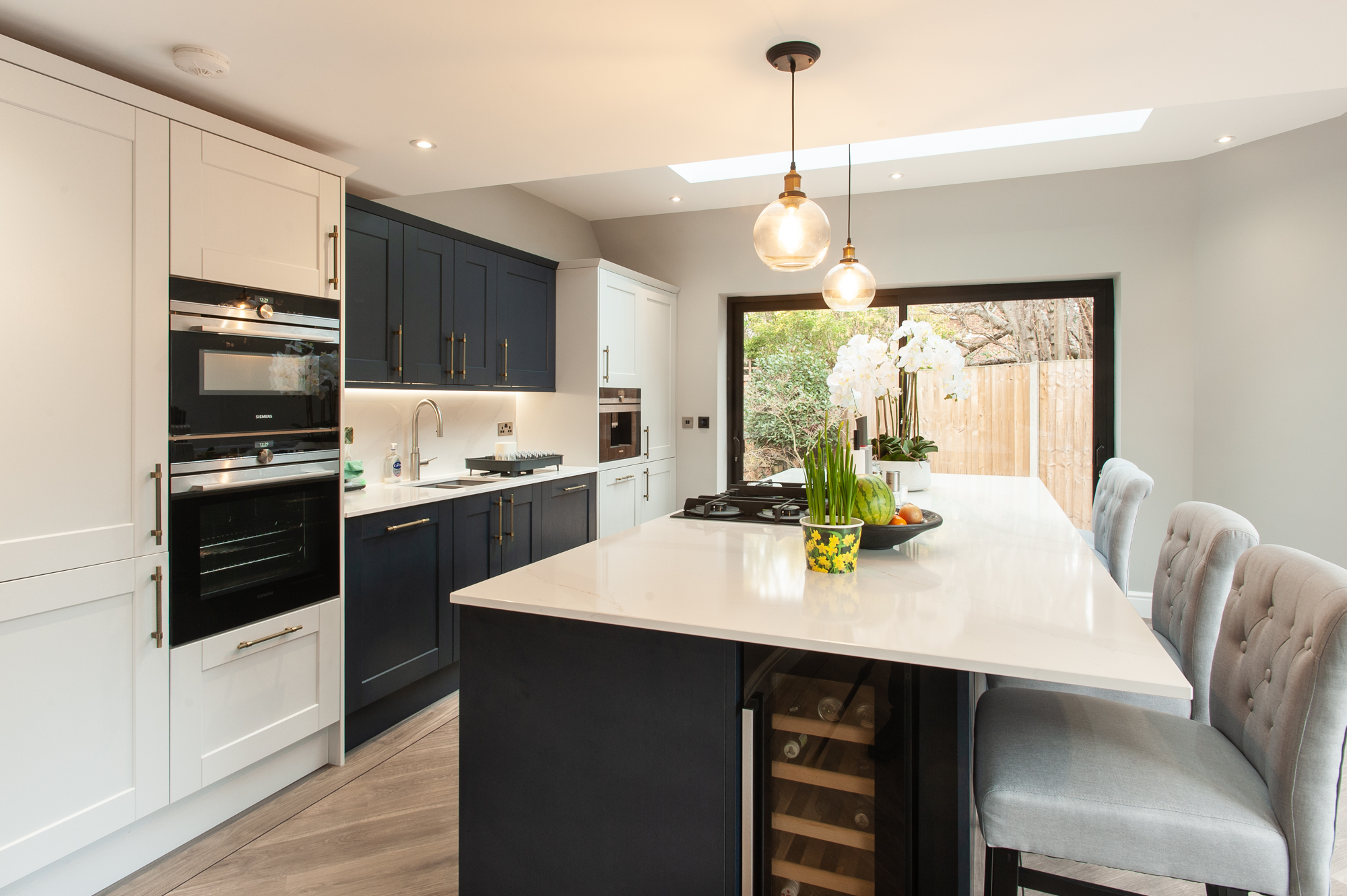With crowded cities, suburbs, and even homes, property owners in London are on the lookout for one of the city’s most valuable commodities: space.
Loft conversions offer an elegant solution to this universal problem. Converting the awkward and often ill-utilised loft space into beautiful and functional living space, not only meets the space requirements, but can also add incredible value to a property.
The design and style of a loft conversion are dependent upon numerous factors. One important aspect is the structure of the roof, which has an immense impact on the eventual design and dimensions of the loft space.
In order to optimise the potential of the loft conversion, it is imperative that the perfect type of roof is selected. Naturally, it then becomes crucial to understand what each type of roof brings and means to your loft conversion.
1. Roof with Skylights –

This is the simplest type of roof design that involves minimal structural changes and is therefore suitable for almost any type of property.
Roof light conversions, or Velux conversions, transform the existing roof space into an additional room by installing skylight windows to the pitch of the original roof, along with floor reinforcements, insulation, a staircase and connection to basic utilities.
For this conversion to be successful, the loft area must be large enough with sufficient head room to create a functional space.
Due to its simple design, this type of roof (and conversion) usually does not require planning permission and is extremely cost-effective.
2. Dormer Roof –

Dormer roofs involve vertically extending the existing roof to create additional floor space as well as head room. As a result, dormer roofs are ideal for almost any type of home and are popular extension options in semi-detached houses which have a sloping roof. Dormer roofs may be flat or pitched in type.
Flat roof dormers essentially result in a box-shaped structure with straight walls and flat ceilings. This allows flat roof dormer conversions to create a lot of interior space. However, these type of dormer roofs are not considered to be aesthetically appealing.
Pitched roof dormers are the more attractive option and create great head room. The addition of dormer windows helps to bring in a lot of natural light and ventilation that enhances the space created.
Dormer roofs are not complex or costly to build, and create a great deal of additional living space. And though they may require planning permission, dormer roofs are considered to be smart investments that add great value to a property.
3. Hip-to-Gable Roof –

A hip-to-gable roof involves transforming the slope of a hip roof into a gable-style roof with a vertical wall. They are best suited for detached and semi-detached properties and bungalows which feature a sloping side roof.
Hip-to-gable roof designs involve considerable structural work and therefore may require planning permission and can be expensive to construct.
However, they are aesthetically appealing, add great value to a home, and create an incredible amount of interior space.
4. Mansard Roof –

Mansard roofs are suitable for most properties including semi-detached, detached, and terraced homes. They involve complex structural changes and, as a result, they generally require planning permission, and are the most expensive type of roof.
Mansard conversions involve altering the structure of the existing roof to create a flat roof with a sloping wall and are typically constructed at the rear part of the house. Mansard roofs add a significant amount of space within the property allowing the creation of different rooms and giving rise to numerous uses.
Their beautiful design, spacious interiors and unique adaptability, makes mansard roof conversions highly valued and sought-after.
5. Roof Terrace –

When looking to create a quiet, outdoor space within properties that have small or non-existent gardens, or those which are located in populous neighbourhoods, roof terraces are the way to go. They help design a unique space that can bring beauty and tranquillity to otherwise chaotic spaces.
A simple design of a roof terrace may involve the creation of a small balcony perfect for bringing in natural light and ventilation while offering great views. While a more extensive roof terrace could incorporate an indoor living space with a substantial roof terrace.
Planning permission is required for roof terraces and they can be expensive to design and construct. However, they add a lot of value to a property and are incredibly appealing features.
Conclusion
A loft conversion, when done right, can have an enormous impact on the overall space of your home and can even increase the value of the property by 10-20%.
This means that loft conversions are the perfect solution for homeowners who cannot extend at ground level but have the roof space to make a difference.
When designing a loft conversion, the type and structure of the roof plays a significant role in the eventual design and functionality of the loft space. Therefore, to design and create the ultimate loft conversion, understanding how each roof type impacts the overall design, is vital.
If you are looking to design and create the perfect bespoke loft conversion, contact the incredible team at Good Design and Build today! We are the primary home extension specialists who can help transform your loft space to create the ultimate loft conversion that elevates your home and adds incredible value to your property.




